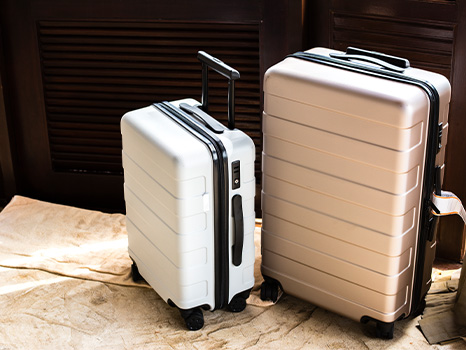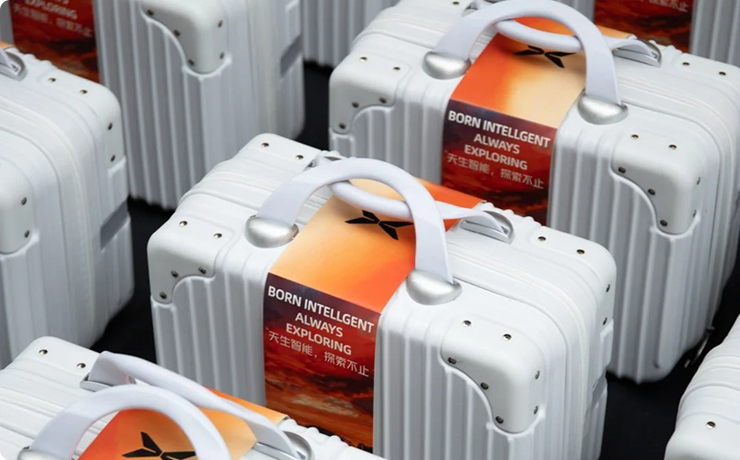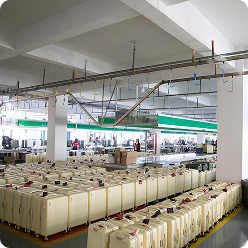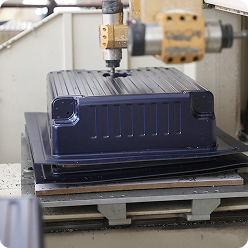Over the past decade, the international luggage industry has undergone profound transformations, from fluctuations in market size to breakthroughs in product innovation, from the reshaping of the brand landscape to the evolution of sales models. This journey has unfolded a unique trajectory across many dimensions. This process has been influenced not only by the global economy and the tourism market, but also by evolving consumer demand and technological advancements. The following article will delve into the development of the international luggage industry over the past decade from the perspectives of market, product, brand, and distribution channels.
1. Market size: Fluctuating upward, with emerging markets on the rise
(1) Overall scale growth trend
Over the past decade, the global luggage market has generally shown growth. Euromonitor data shows that between 2013 and 2019, the global luggage market grew steadily from approximately $15 billion to nearly $19 billion, maintaining a compound annual growth rate of 3% to 5%. From 2020 to 2022, the COVID-19 pandemic severely impacted the tourism industry, leading to a significant decline in the luggage market, which fell to approximately $14 billion in 2020. However, as the global epidemic situation eased and the tourism industry recovered, the market rebounded to over $17 billion in 2023 and is expected to exceed $22 billion by 2028.
(2) Regional market differentiation
- Mature Markets: Stability with Change : North America and Europe, traditionally mature markets, have long dominated the global luggage market. The US, the world's largest single market, saw its market size grow from US$6 billion to approximately US$7.5 billion from 2013 to 2019, with annual growth rates of approximately 3%-4%. During this period, strong demand for mid- to high-end luggage among US consumers fueled market growth. During the pandemic, the market declined, falling to approximately US$5 billion in 2020, but with the easing of travel restrictions, it recovered to over US$6.5 billion in 2023. The European market grew from US$5 billion to approximately US$6 billion from 2013 to 2019, with similar annual growth rates. The pandemic also impacted the market, with the market falling to approximately US$4 billion in 2020 before gradually recovering.
- Emerging Markets: Rapid Growth : Emerging markets such as Asia (excluding China), the Middle East, and Africa have become new growth engines for the industry over the past decade. For example, India's luggage market grew from US$1 billion to US$2 billion between 2013 and 2019, driven by economic development, a growing middle class, and unleashed travel demand. The Middle East's market size, driven by high spending power fueled by its oil-rich economy and abundant tourism resources, grew from US$800 million to approximately US$1.5 billion over the same period, with annual growth rates of 12% to 18%. Despite a smaller base, the African market has demonstrated strong growth momentum, maintaining annual growth rates of 10% to 15%, and is expected to maintain this high growth rate.
2. Product Innovation: Technology and Design Lead the Change
(1) Deep integration of intelligent technology
Over the past decade, smart technology has fueled innovation in luggage products. Early on, suitcases with USB charging capabilities emerged, solving the challenge of charging mobile devices for travelers and gaining widespread market popularity. Subsequently, GPS tracking capabilities began to be used, allowing travelers to track their luggage's location in real time via mobile apps, effectively reducing the risk of loss and becoming particularly popular for international travel. More recently, the emergence of smart weighing systems has made it easy for travelers to track their luggage's weight, avoiding extra charges at the airport for overweight items. Some high-end smart luggage also features electronic locks that support fingerprint, password, and mobile Bluetooth unlocking, enhancing security and convenience. For example, the smart suitcases launched by the American brand Away, featuring a built-in rechargeable battery, GPS tracker, and electronic scale, have been a huge success, becoming a benchmark in the smart luggage category.
(2) Material and design innovation
- Material Diversification and Upgrade : In terms of materials, in addition to traditional materials such as ABS plastic and nylon, high-performance, lightweight materials are becoming increasingly widely used. PC (polycarbonate) has gradually become the mainstream material in the hard luggage market due to its high toughness, impact resistance, and good formability. For example, the German brand Rimowa launched polycarbonate suitcases after 2000, which quickly gained market recognition. Aluminum alloy continues to be popular in the high-end business and travel luggage sectors due to its durability and high-end appearance. At the same time, environmentally friendly materials such as recycled plastics and bio-based materials are also entering the market, conforming to the global trend of green consumption. For example, some brands use recycled ocean plastics for luggage shells, which not only addresses environmental issues but also meets consumer demand for sustainable products.
- Diverse Design Styles : Luggage designs are showing a wide range of styles. On the one hand, minimalist fashion is prevalent, characterized by clean lines and solid colors, meeting the aesthetic needs of modern consumers seeking simplicity. For example, Rimowa's classic aluminum suitcase, with its minimalist appearance and iconic grooved design, has become a fashion favorite, becoming not only a travel accessory but also a fashion icon. On the other hand, personalized and artistic designs are constantly emerging. Brands are collaborating with artists and designers to launch limited-edition luggage with unique patterns and colors. For example, French brand Louis Vuitton has collaborated with several renowned artists to incorporate artwork into its luggage designs, making it a fashionable piece that is both practical and collectible. Furthermore, luggage designs are becoming more refined to suit different usage scenarios, such as business suitcases designed for business people with laptop compartments and document storage areas, and waterproof, wear-resistant, and large-capacity outdoor suitcases designed for outdoor travelers.
3. Brand Building and Market Competition: Giants Dominate, New Forces Rise
(1) Continuous innovation of traditional brands
- Samsonite : As one of the world's largest luggage brands, Samsonite has been continuously upgrading its brand and innovating its products over the past decade. From 2013 to 2016, it acquired French brand Lipault, American brand Gregory, and high-end business brand Tumi, broadening its brand portfolio to encompass diverse market segments, from young fashion to high-end business. In terms of product innovation, it actively utilizes new materials and technologies, launching a variety of smart luggage and durable products utilizing innovative materials. Despite a decline in performance due to short selling in 2018, Samsonite subsequently rebounded strongly in the European and American markets through strategic adjustments. In the first quarter of 2023, sales of its top three brands (Samsonite, American Tourister, and Tumi) accounted for 90.35% of total sales.
- Rimowa : After being acquired by LVMH in 2016, Rimowa entered a new phase of development. Leveraging LVMH's resources, the brand underwent a transformation towards a younger image. The brand revamped its logo, creating a fresh visual identity. It frequently collaborated with trendy brands like Supreme and Off-White, launching numerous limited-edition products and attracting a large number of young consumers. At the same time, the brand strengthened its global store presence, increased its retail presence, and reclaimed distribution rights in markets like China. The company optimized its store experience and customer service, reshaping its image as a high-end luxury brand. By 2024, its sales had nearly quadrupled in the past five years, achieving double-digit growth.
(2) New brands emerge
- Away : Founded in 2015, Away is a US direct-to-consumer (DTC) luggage brand that has rapidly risen to prominence thanks to its precise market positioning and innovative products. Targeting a young, fashionable, and frequently traveling consumer demographic, its product designs combine minimalist style with practicality, featuring features like USB charging and TSA-approved locks. Through online channels and social media marketing, Away reaches consumers directly, reducing intermediary costs and rapidly expanding the market with its cost-effective products. Within just a few years, Away has become a prominent brand in the US luggage market, valued at over $1 billion.
- Delsey : French brand Delsey has steadily increased its global market share over the past decade through continuous product innovation and market expansion. It has launched a series of products tailored to different consumer groups and usage scenarios, including lightweight and portable carry-on luggage and large-capacity family travel luggage. Its material selection closely follows industry trends, utilizing new materials such as PC and aluminum alloy. Furthermore, it has strengthened its online and offline channel development, opening exclusive stores and counters in numerous countries and regions around the world, continuously increasing its brand awareness.
(3) Diversification of market competition
As market competition intensifies, competition in the luggage industry is no longer limited to product quality and price. Competition is becoming increasingly fierce in areas such as brand image building, product design innovation, channel expansion, and after-sales service. In terms of brand image, brands are cultivating unique brand personalities through advertising, celebrity endorsements, and social media marketing to attract target consumers. For example, Tumi has strengthened its image as a premium business luggage brand by sponsoring high-end business events and collaborating with prominent business professionals. In terms of product design, brands are constantly innovating to differentiate their products in the market. In terms of distribution channels, in addition to traditional retail channels, e-commerce platforms have become a key sales channel, with brands strengthening their online presence and developing omnichannel retail models that integrate online and offline channels. After-sales service has also become a key competitive factor, with some brands offering services such as extended warranties, free repairs and maintenance, and rapid response to after-sales inquiries to enhance consumer satisfaction and loyalty.
4. Sales Channel Transformation: Online Channels Rise, Omni-channel Integration Accelerates
(1) Rapid development of e-commerce channels
Over the past decade, e-commerce has flourished globally, profoundly transforming the luggage sales landscape. From 2013 to 2023, online sales accounted for approximately 20% of the global luggage market, increasing to over 50%. Amazon, one of the world's largest e-commerce platforms, has become a key sales channel for many luggage brands. In 2023, Amazon sold over 200,000 luggage items, generating nearly $29.12 million in sales. Combination suitcases (such as three-piece suitcases) made primarily of ABS and fabric are the most popular, accounting for 51%. In addition to Amazon, e-commerce platforms such as eBay and Shopee also offer a lucrative market for luggage sales. The rise of online channels not only expands brands' sales reach and reduces marketing costs, but also enables brands to accurately grasp consumer needs through big data analysis, enabling product customization and targeted marketing. Brands can analyze consumer browsing and purchasing data to understand consumer preferences and develop products that meet market demand.
(2) Omni-channel retail becomes a trend
Faced with the impact of e-commerce, offline brick-and-mortar channels are actively exploring transformation, and an omnichannel retail model integrating online and offline channels has become an industry consensus. Brands are creating immersive shopping experiences by opening flagship and concept stores to attract consumers. For example, Rimowa has opened flagship stores in upscale shopping streets in major cities around the world. These stores not only display and sell products but also feature areas showcasing the brand's history and offering customization options to enhance the consumer shopping experience. Furthermore, online and offline channels are leveraging resources and complementing each other's strengths. Consumers can learn about products and place orders online, then choose to pick up their orders in-store or enjoy delivery. Offline stores serve as hubs for brand display, experience, and after-sales service, supporting online sales. Through omnichannel integration, brands are improving operational efficiency and consumer satisfaction, enhancing their market competitiveness.
5. Future Outlook: Opportunities and Challenges Coexist
1. Opportunities
- The tourism market continues to recover : As the global economy continues to recover, the tourism market will continue to rebound, with international tourist arrivals expected to return to and even exceed pre-pandemic levels. The World Tourism Organization predicts that the global tourism market will maintain an annual growth rate of 5%-8% over the next few years, which will directly drive demand for luggage. Rising incomes and shifting tourism consumption attitudes in emerging markets will create significant market potential for the industry.
- Technological innovation drives product upgrades : Smart technologies, new materials, and environmentally friendly technologies will be more widely applied in luggage product development. In the future, smart luggage will feature even more advanced features, such as deep integration with smartphones and automatic obstacle avoidance and tracking. New environmentally friendly materials will further reduce product weight and improve durability. Advanced manufacturing technologies such as 3D printing may be used for customized products to meet personalized consumer needs, driving industry product upgrades and enhancing market competitiveness.
- Consumption upgrades and growing demand for personalization : Consumers are pursuing an improved quality of life and are demanding higher standards for luggage quality, design, and functionality. They are more inclined to purchase personalized, branded, and intelligent products. This will prompt brands to increase R&D investment and launch more differentiated products that meet the needs of different consumer groups, driving the industry towards high-end and personalized development.
(2) Challenges
- Intensifying market competition : With a positive market outlook, more and more brands are entering the luggage market, leading to increasingly fierce competition. Not only will traditional brands compete with each other, but emerging brands are also seizing market share with innovative business models and products. To stand out from the competition, brands must continuously improve in product innovation, brand building, channel expansion, and cost control.
- Raw material price fluctuations and supply chain risks : The prices of key raw materials used in luggage production, such as plastics and metals, fluctuate significantly due to the impact of international commodity markets, making it more difficult for companies to control production costs. Furthermore, the complexity of global supply chains increases the risk of supply disruptions. For example, during the pandemic, factory shutdowns and logistics disruptions in some regions severely impacted production and sales. Companies need to strengthen supply chain management and optimize procurement strategies to mitigate the impact of raw material price fluctuations and supply chain risks on their operations.
- Stricter environmental policies : Global environmental awareness is rising, and environmental policies are becoming increasingly stringent. Luggage manufacturers must prioritize environmental protection during product design and production, using environmentally friendly materials and optimizing production processes to minimize environmental impact. This will increase R&D and production costs, placing higher demands on companies' sustainable development capabilities.






